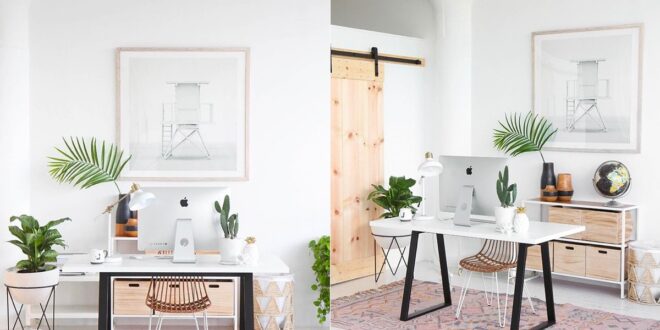
The Allure of the Minimalist Home: Creating Space, Clarity, and Calm
In an era defined by excess and constant stimulation, the minimalist home has emerged as a sanctuary of calm and intentionality. More than just a design trend, embracing minimalism is a conscious choice to prioritize experiences and relationships over possessions. This article explores the principles, benefits, and practical steps involved in creating a minimalist home that fosters peace and enhances well-being.
Understanding the Essence of Minimalism
At its core, minimalism is about living with less. It’s not about deprivation or stark aesthetics, but about carefully curating your belongings to include only those items that bring value, joy, or serve a specific purpose. A minimalist home is a reflection of this philosophy, characterized by clean lines, uncluttered surfaces, and a focus on functionality. It’s a space where everything has its place and contributes to a sense of order and tranquility. This doesn’t mean sacrificing comfort or personality; rather, it’s about expressing your style through a carefully selected collection of meaningful items.
The Benefits of Embracing a Minimalist Lifestyle
The advantages of adopting a minimalist home extend far beyond aesthetics. It can positively impact various aspects of your life:
- Reduced Stress and Anxiety: A cluttered environment can contribute to feelings of overwhelm and stress. By decluttering and simplifying your space, you create a more peaceful and calming atmosphere.
- Increased Focus and Productivity: A minimalist home minimizes distractions, allowing you to focus on what truly matters, whether it’s work, hobbies, or spending time with loved ones.
- More Time and Energy: Less stuff means less to clean, organize, and maintain. This frees up your time and energy to pursue your passions and enjoy life’s experiences.
- Financial Freedom: Minimalism encourages mindful consumption, leading to reduced spending and increased savings. By focusing on needs rather than wants, you can achieve greater financial security.
- Environmental Responsibility: A minimalist lifestyle promotes sustainability by reducing waste and consumption. By buying less and choosing durable, eco-friendly products, you can minimize your environmental impact.
Creating Your Own Minimalist Haven: A Step-by-Step Guide
Transforming your home into a minimalist sanctuary is a journey, not a destination. Here’s a practical guide to help you get started:
Decluttering: The Foundation of Minimalism
Decluttering is the first and most crucial step in creating a minimalist home. It involves systematically sorting through your belongings and letting go of items you no longer need, use, or love. Here’s a proven method:
- Start Small: Begin with a single drawer, shelf, or corner of a room. This makes the task less daunting and provides a sense of accomplishment.
- The Four-Box Method: Designate four boxes labeled “Keep,” “Donate,” “Sell,” and “Trash.” As you go through your belongings, place each item in the appropriate box.
- Ask Yourself Key Questions: For each item, ask yourself: “Do I use this regularly?”, “Do I love this item?”, “Does this item serve a purpose in my life?”. If the answer to all these questions is no, it’s likely time to let it go.
- Be Ruthless: It’s easy to get attached to sentimental items, but it’s important to be objective. If an item is no longer serving you, consider taking a photo of it to preserve the memory and then donate or sell it.
- Don’t Procrastinate: Once you’ve decluttered a space, immediately take the “Donate,” “Sell,” and “Trash” boxes to their respective destinations. This prevents clutter from accumulating again.
Organizing: Finding a Place for Everything
Once you’ve decluttered, the next step is to organize the items you’ve decided to keep. A minimalist home is characterized by intentional storage solutions that maximize space and minimize clutter. Here are some tips:
- Vertical Storage: Utilize shelves, wall-mounted organizers, and tall cabinets to maximize vertical space.
- Multi-Purpose Furniture: Invest in furniture that serves multiple functions, such as a sofa bed, a coffee table with storage, or a bed with built-in drawers.
- Clear Containers: Use clear containers to store items in an organized and visually appealing way. This allows you to easily see what you have and prevents items from getting lost or forgotten.
- Designated Zones: Create designated zones for specific activities, such as a reading nook, a home office, or a workout area. This helps to keep your home organized and functional.
- Keep Surfaces Clear: A minimalist home is characterized by clean, uncluttered surfaces. Avoid leaving items out on countertops, tables, and shelves.
Choosing a Minimalist Aesthetic
The aesthetic of a minimalist home is typically characterized by clean lines, neutral colors, and a focus on natural light. However, minimalism doesn’t have to be boring or sterile. You can personalize your space by incorporating elements that reflect your style and personality.
- Neutral Color Palette: Choose a neutral color palette for your walls, floors, and furniture. This creates a calming and cohesive look.
- Natural Light: Maximize natural light by keeping windows uncovered and using light-colored curtains or blinds.
- Quality over Quantity: Invest in a few high-quality pieces of furniture and décor that you truly love, rather than filling your home with cheap, disposable items.
- Plants: Incorporate plants into your décor to add life and vibrancy to your space.
- Personal Touches: Add personal touches, such as artwork, photographs, or souvenirs, that reflect your personality and create a sense of warmth and comfort. A minimalist home shouldn’t feel impersonal.
Maintaining a Minimalist Home
Creating a minimalist home is an ongoing process. To maintain your minimalist haven, it’s important to develop sustainable habits and routines:
- The One-In, One-Out Rule: For every new item you bring into your home, get rid of one similar item. This prevents clutter from accumulating.
- Regular Decluttering: Schedule regular decluttering sessions to keep your home organized and clutter-free.
- Mindful Consumption: Be mindful of your purchases and avoid impulse buys. Before buying something, ask yourself if you truly need it and if it will add value to your life.
- Embrace Digital Minimalism: Extend your minimalist principles to your digital life by decluttering your inbox, unsubscribing from unwanted emails, and organizing your digital files.
- Practice Gratitude: Focus on appreciating what you have rather than constantly wanting more. This helps to cultivate contentment and reduce the urge to accumulate possessions.
Minimalism and Sustainability
The minimalist lifestyle aligns perfectly with sustainable living practices. By consuming less, reducing waste, and choosing durable, eco-friendly products, you can minimize your environmental impact. A minimalist home often incorporates:
- Sustainable Materials: Furniture and décor made from sustainable materials such as bamboo, reclaimed wood, and organic cotton.
- Energy-Efficient Appliances: Energy-efficient appliances that reduce energy consumption and lower utility bills.
- Reusable Products: Reusable products such as water bottles, shopping bags, and food containers to reduce waste.
- Composting: Composting food scraps and yard waste to reduce landfill waste and create nutrient-rich soil for gardening.
- Reduced Water Consumption: Practices to reduce water consumption, such as installing low-flow showerheads and toilets, and watering plants efficiently.
Overcoming Challenges and Embracing the Journey
Adopting a minimalist lifestyle can be challenging, especially in a society that constantly bombards us with messages to buy more. It requires a shift in mindset and a willingness to challenge societal norms. However, the benefits of creating a minimalist home and embracing a minimalist lifestyle far outweigh the challenges.
Remember that minimalism is a personal journey. There’s no one-size-fits-all approach. Experiment with different strategies and find what works best for you. Be patient with yourself and celebrate your progress along the way. The goal is not to achieve perfection, but to create a home that supports your well-being and allows you to live a more intentional and fulfilling life. [See also: Decluttering Your Life: A Comprehensive Guide] and [See also: Sustainable Living: Simple Steps for a Greener Lifestyle]
The Future of Minimalist Homes
As awareness of the environmental and psychological benefits of minimalism grows, the trend towards minimalist homes is likely to continue. We can expect to see more innovative and sustainable design solutions that maximize space, minimize waste, and promote well-being. The minimalist home of the future will be a smart, sustainable, and personalized sanctuary that reflects the values of its inhabitants.
 Nimila
Nimila




